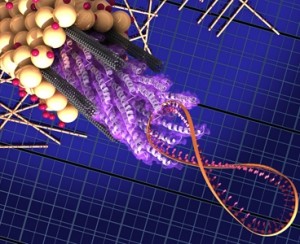MIT: Virus improves solar tech efficiency

Talk about weird science. Researchers at the Massachusetts Institute of Technology (MIT) are using a genetically modified version of the M13 virus, which infects bacteria, to control the arrangement of nanotubes on the surface of solar cells -- improving their efficiency.
Here's what is going on in layman's terms. By adding carbon nanotubes to solar cells, the theory is that you can improve the electron collection process on the surface of a solar cell - those electrons are what are harnessed to produce an electrical current.
The only trouble is that nanontubes can be a bit persnickety -- sometimes they can clump together, which is where the virus comes in. That's because the M13 virus helps prevent that clumpage problem. It also helps the nanotubes from shorting out. There is a much more scientifically sound description of all this in the Nature Nanotechnology journal.
The MIT researchers are testing this process with dye-sensitized solar cells, which have a different makeup than the silicon used in conventional solar cells. But the technique could be applied to quantum-dot and organic solar cells. So far, the tests have shown an efficiency improvement of up to one-third.
